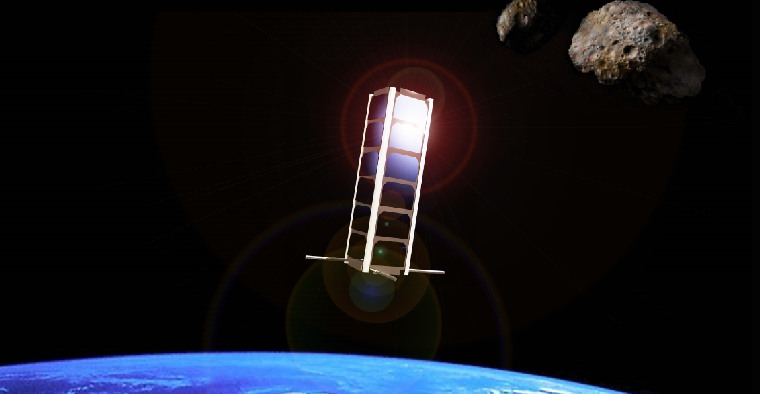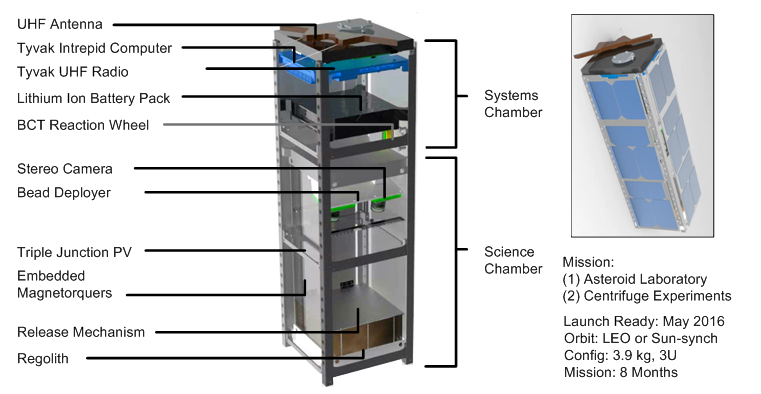UA's Space and Terrestrial Robotic Exploration Laboratory (SpaceTREx) in collaboration with the Planetary Formation Laboratory (PFL) has developed the Asteroid Origins Satellite I (AOSAT 1), an on-orbit, 3U (34 x 10 x 10 cm), 4kg CubeSat, to simulate asteroid surface conditions. AOSAT 1 will achieve several firsts including being the first centrifuge spacecraft and being the first on-orbit science laboratory dedicated for planetary science research. Demonstration of this CubeSat has provided a low-cost pathway towards refining asteroid physical models, shed light on asteroid origins, and constrained the design of future landers, rovers, and resource extractors. AOSAT 1 will house crushed meteorites (remnants of asteroids) and enable scientific experiments within its payload chamber while operating in two distinct modes: 1) a centrifuge producing artificial gravity to simulate surface conditions on asteroids greater than 1 km diameter, and 2) as a stationary micro-gravity laboratory to investigate primary accretion. These experiments will further our knowledge of planet formation and surface properties of asteroids. Major design challenges related to spacecraft stability must be overcome due to the shifting regolith within the relatively large experimental chamber. The system illustrates the effective use of low-cost, off-the-shelf components in the rapid assembly and instrumentation of a CubeSat science laboratory.
Students will build on the established AOSAT 1 CubeSat centrifuge mission and execute development of AOSAT 2 to 4. The proposed series of missions consists each of a 3U CubeSat, 4 kg, 34 × 10 × 10 cm spacecraft that will spin in Low Earth Orbit producing a centrifugal force inside an end-chamber that is to simulate the milligravity or centi-gravity of asteroid surfaces. Like AOSAT-1, another variant is the AOSAT+ concept. It is a 12U CubeSAT positioned in LEO, with a 3-axis reaction wheel based attitude actuation system. In addition to the precision-control this ACDS system affords the onboard centrifuge experiments, it also provides accurate 1º pointing capability sufficient for achieving 1.5 Mbps downlink speeds over S-band to the MC3 Ground Network. We can exploit this great bandwidth increase over AOSAT-1 by transmitting sequences of images from the experiments. Strategically positioned cameras record the positions of grains and conditions inside the AOSAT+ chamber, making use of laser sheets for illumination.

